I’m not a rose lover. I don’t cut flowers to bring indoors, and don’t aspire to grow perfectly formed or scented flowers. When I plant a rose it’s because it’s a sturdy and attractive shrub that blooms for a long period with a minimum of bother. Rose enthusiasts might turn their noses up at low care roses, and I don’t doubt that they fall well short of standards that determine a fine rose. I only want a long blooming shrub that doesn’t require spraying or other care.
There will be one rose or another blooming in my garden from mid May into November, and none will require a bit of care. Through the years I’ve tried a variety of low care roses. A few survived for a year or two without much bother, but then became troubled by leaf spotting and mildew and would usually defoliate by the start of August. 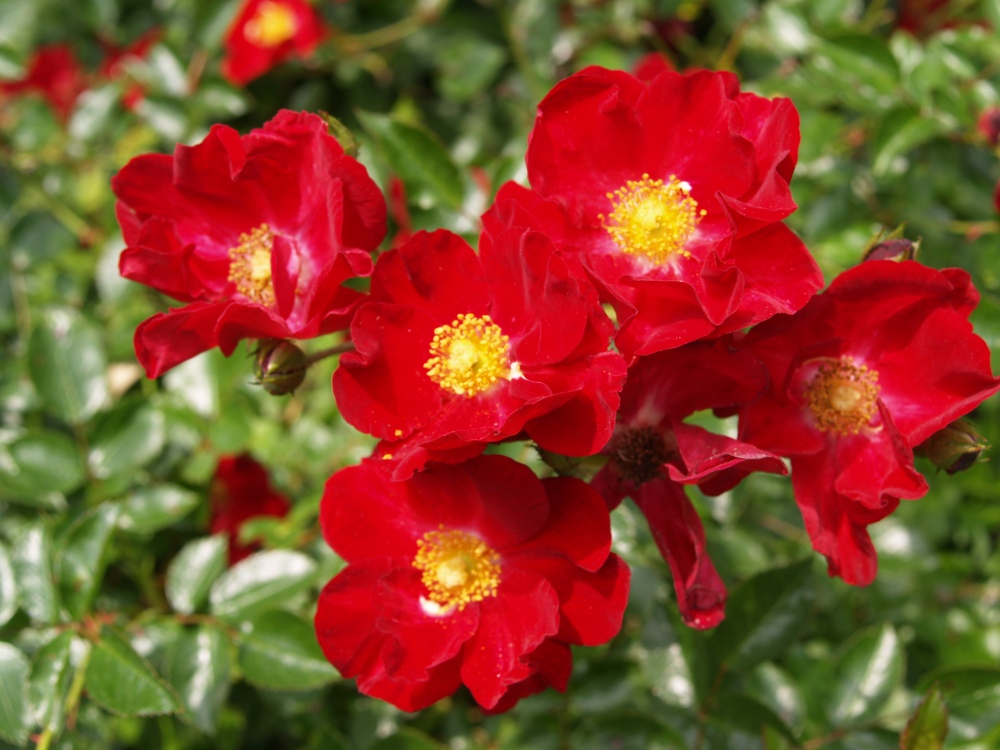
I planted several Flower Carpet roses, which were touted as disease resistant ground cover roses, but proved to be neither low growing or resistant to common black spot and powdery mildew fungi. They performed adequately the first year, but each succeeding they were more troubled, and all but the red (above) were eventually dug out and discarded. Even the red must be cut back annually so that it grows with enough vigor to remain healthy without spraying.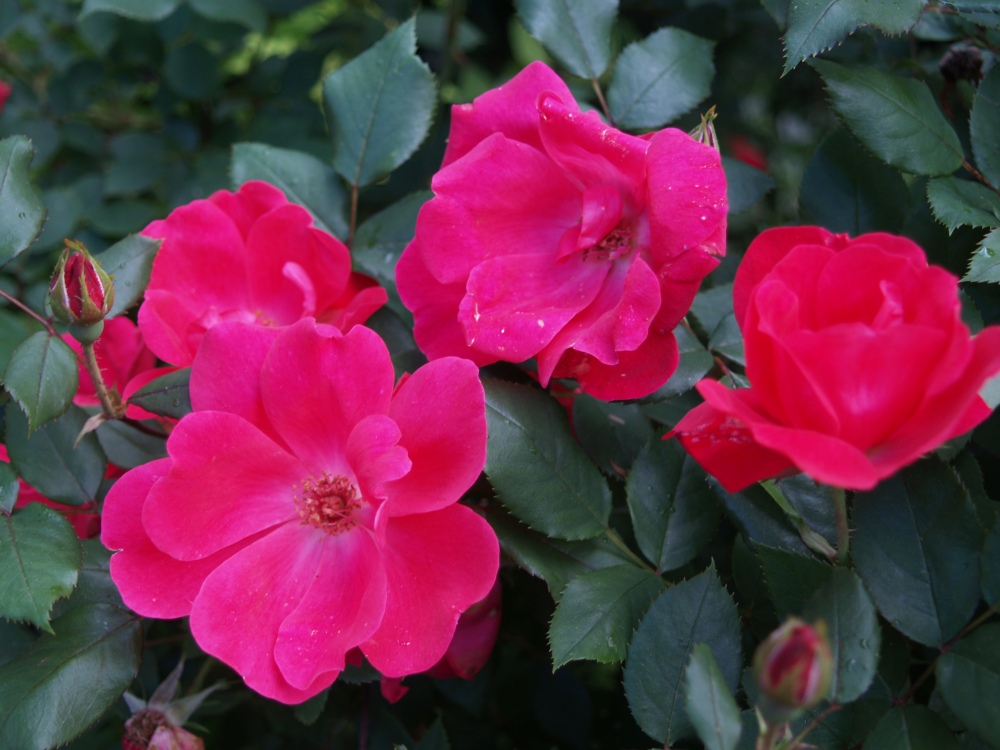
When Knockout roses were introduced (a few years after Flower Carpets) I was skeptical, but the claims of disease resistance were more modest, so I bought the ‘Red Knockout’ (above) with low expectations. After a year I was impressed enough to purchase the ‘Pink’ and ‘Blush Pink’ (below). There were no leaf spots, and no mildew, and as I talked to gardeners from the hot, humid southeast to the cool northeast the reports were consistent. Knockout rose was a true low care rose, one that bloomed from May into November in my garden and longer in warmer regions. 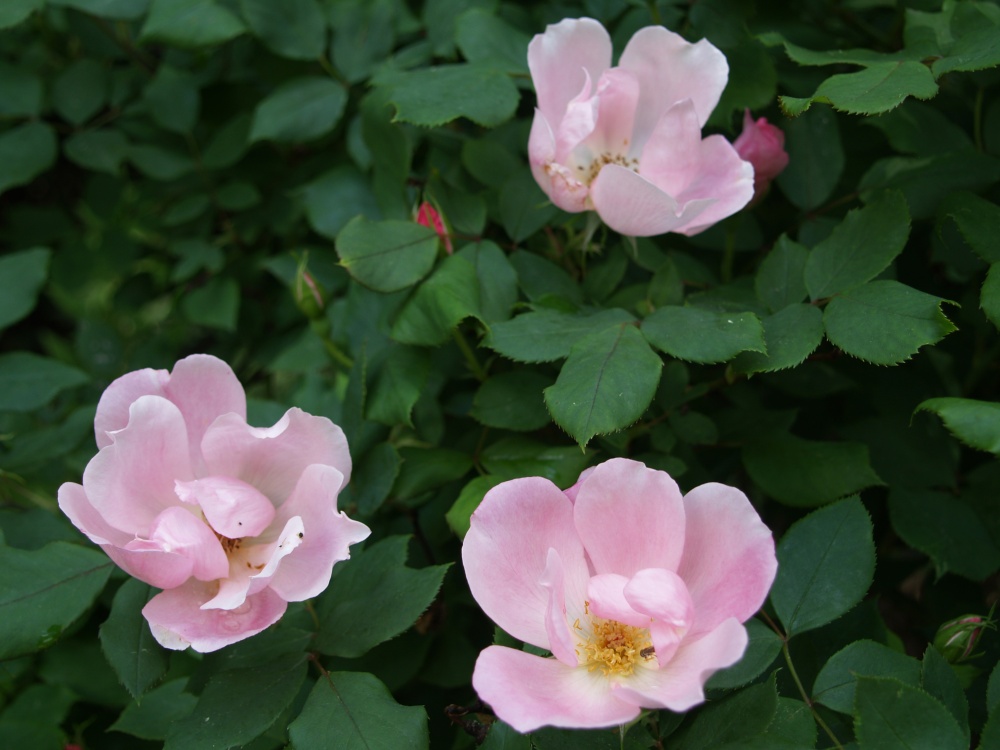
But the folks who introduced Knockout went astray when they introduced ‘Rainbow’, which performed well the first year, but quickly was overcome by spotting the second spring. By the third spring Rainbow joined the Flower Carpets in the compost heap. The latest introduction, the yellow ‘Sunny Knockout’ (below), is a vigorous, disease free rose, but its color quickly fades to cream in warm temperatures, so that it is mildly disappointing.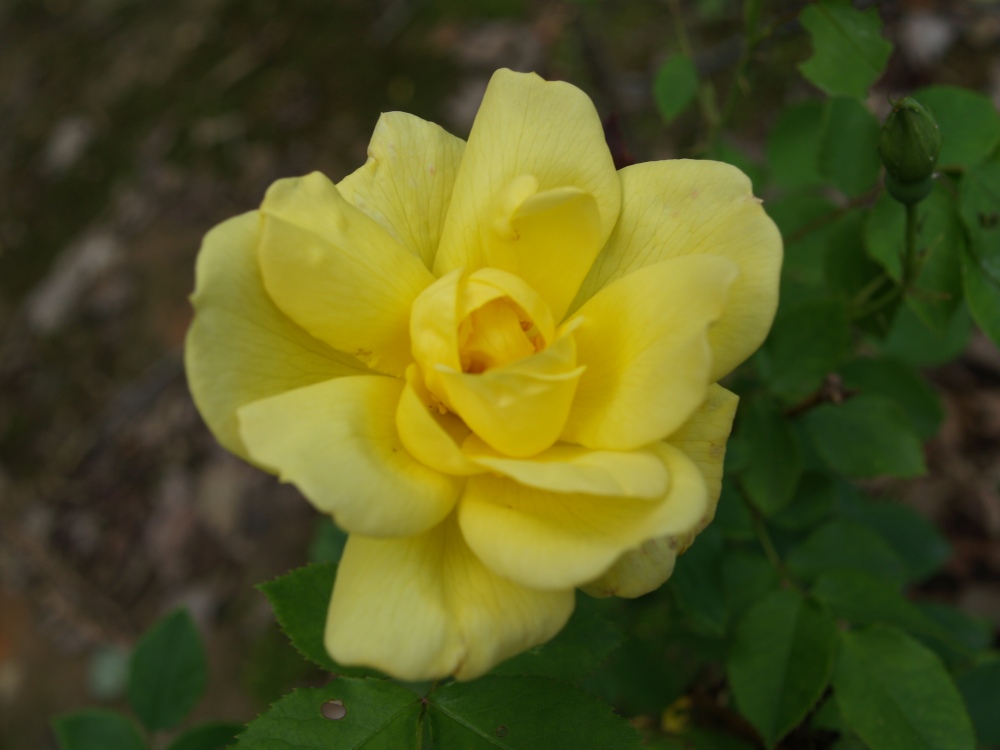
There are a number of Knockout copies, and some that claim to have similar genetics, but I’ve not been anxious to give them a trial, though I did plant a white blooming ‘White Out’ (below) that seems every bit as good as any of the Knockouts. 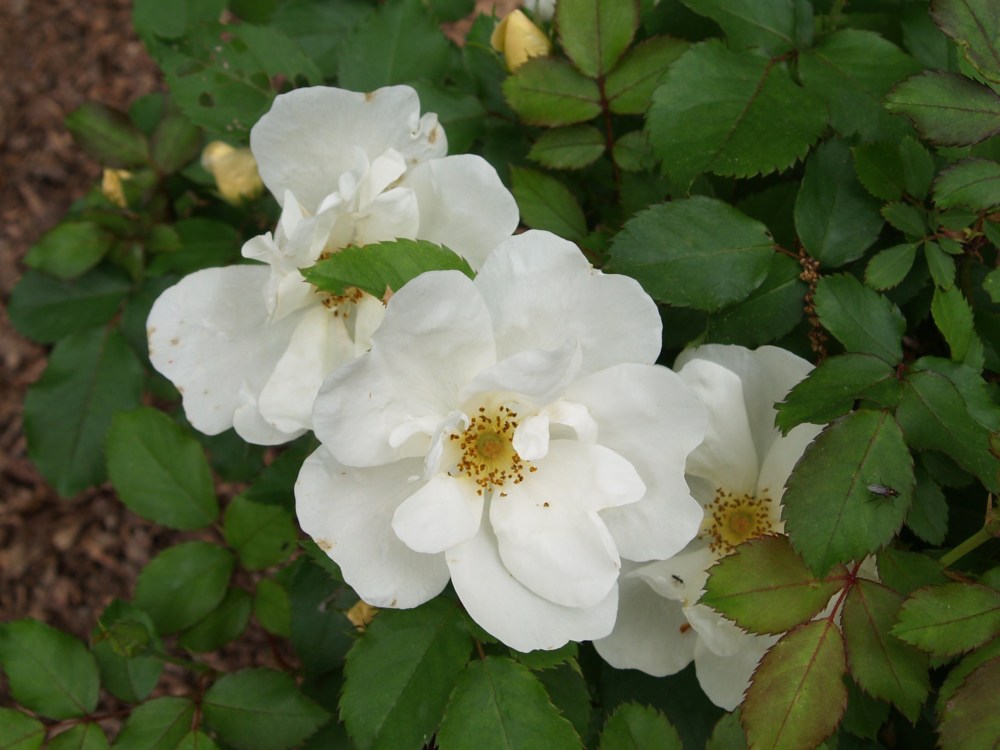
A marketing competitor of Knockout, the ‘Home Run’ rose (below) is a true red, rather than the pink, cherry-red of ‘Knockout Red’. But, it has grown sparsely for me, and its time to prove it belongs is running short.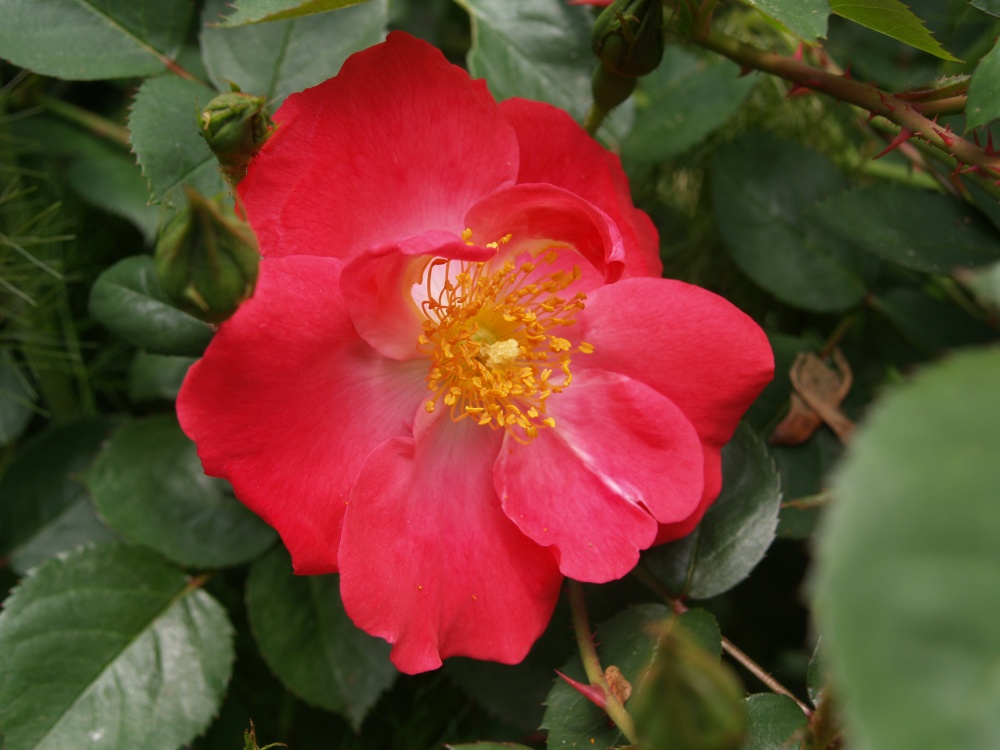
Though I’ve heard of an occasional problem with Knockouts, the only bother that I’ve had is that they grow taller and wider than I’d prefer, and if there was a smaller shrub or ground cover version then wouldn’t that be fine. Three years ago I planted several Drift ground cover roses, though I thought that the flowers were a bit too small to make much of a show.
In the first year I was disappointed with the lack of growth of the Drifts, but after seeing lush growth the following year I realized that its poor performance was probably more a result of my lack of attention to watering when they were first planted. In their third year the Drifts have remained compact and disease free, and they bloom continuously, without the bloom, rest, bloom cycle of other roses. 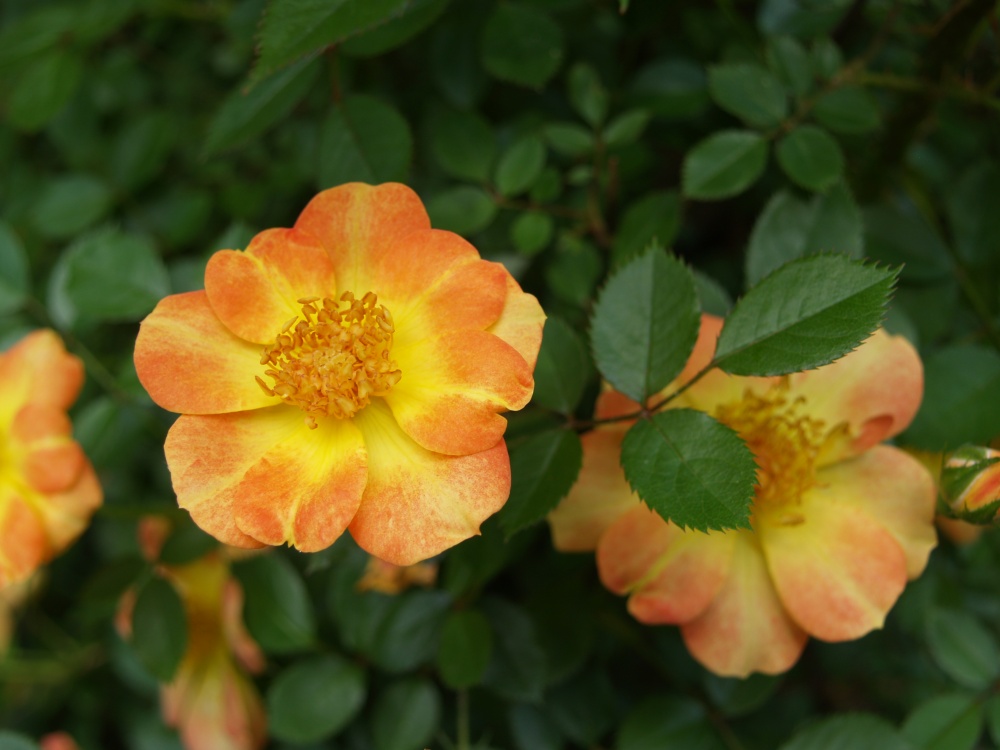
Last year I planted several Oso Easy roses, and so far I’ve been quite pleased with their disease resistance and blooming. The orange with a golden center ‘Paprika’ (above) has become a favorite, and I’m hoping that they continue to perform well.
Though low care roses will not win any prizes for best or most fragrant blooms, I am happy to have planted them. The day that they require more care, or spraying, well, there’s more room on the compost pile.
This rose would look nice by my Japanese Torri garden gate. I will have to look for it!
Fantastic post, remarkable info. More often than not I encounter truly terribly written articles.
I mean seriously rubbish stuff. I often click away before I even pass over the
first paragraph. It’s cool to see something which is in fact good. Well done!
Thanks for this post. I have a Siren Red Crape Myrtle and a Teddy Bear Magnolia about 20 feet from it. I’m thinking that red roses around the Teddy Bear would look pretty and was debating between red drifts or red carpet roses. Was the red carpet rose the only carpet rose that didn’t end up in the compost pile? Thank you…
I’ve found that the only way I can tolerate the red Flower Carpet rose is when it cut back to about a foot in mid spring. This rejuvenation pruning gives it enough vigor to keep its foliage until late summer when it disappears again. Drift rose do not have these problems, and they grow with a more compact form. I’ve seen nothing to dispute my feeling that Flower Carpet roses are overhyped and underperforming, and I would not plant another. I would prefer if Drift roses had larger blooms, but that’s a minor consideration.
Thank you for the run-down on these roses!